
The Ardennes to the Rhine
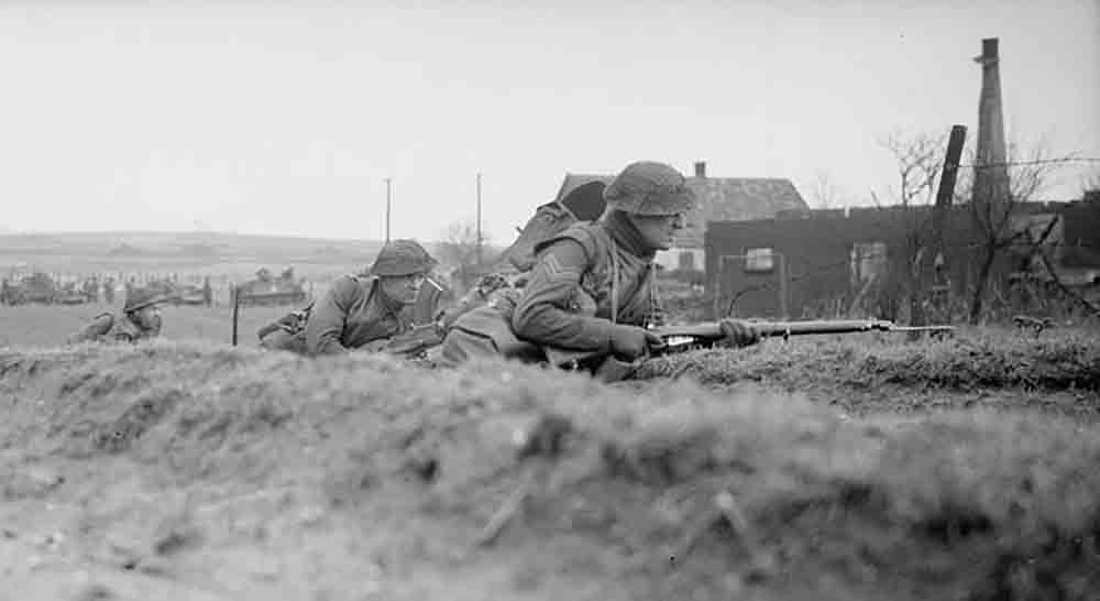
Infantry and armour in action during Operation Veritable, 8 February 1945.
By late 1944, Allied momentum was building after the setback at Arnhem. Key cities in Belgium and the Netherlands were liberated and supply lines had been shortened after the Battle of the Scheldt opened up the port of Antwerp for Allied shipping. However, their advance would be halted in the Ardennes Forest by the German counter attack known as 'The Battle of the Bulge'.
In a desperate roll of the dice on 16 December 1944, the Wehrmacht launched their last major offensive mainly against American positions. Initially the Allies were thrown into disarray, but ultimately the offensive failed to make a decisive breakthrough hampered by dogged resistance, a lack of fuel for the Panzers and improving weather conditions that had halted the dominant Allied airpower from flying. In the northern sector, 55,000 British and Canadian troops fought in the latter stages of the Battle of the Bulge halting the advance of the 2nd Panzer Division.
The Wehrmacht's losses were heavy in both manpower and armour and the inevitable push towards the German borders and beyond started.
THE ROER TRIANGLE - Operation Blackcock
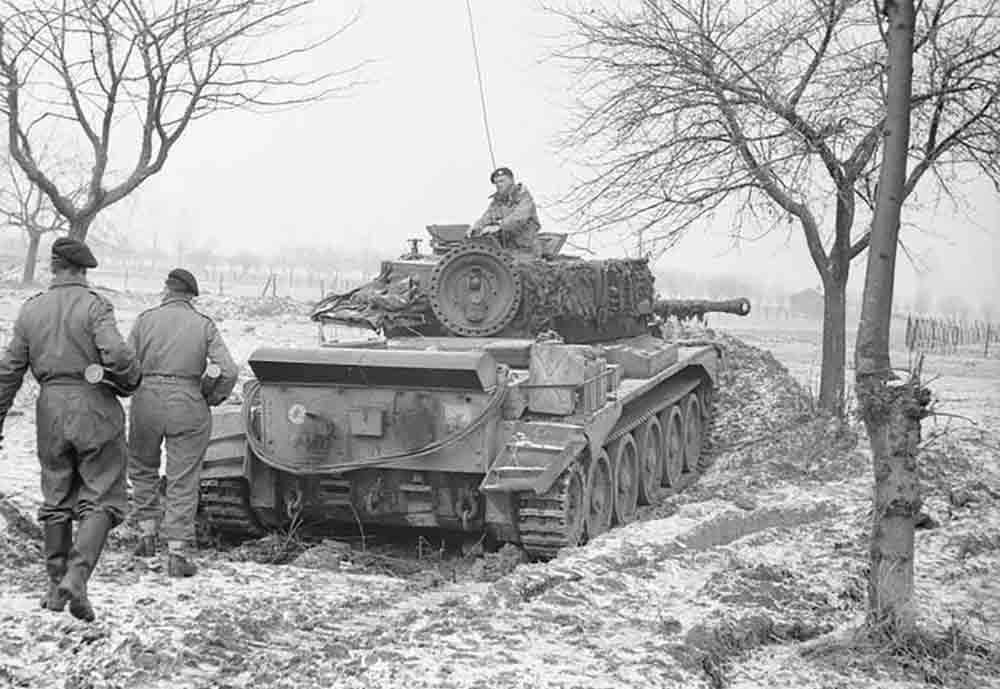
Cromwell tank of 22nd Armoured Brigade, dug in near Sittard.
The aim of Operation Blackcock was to clear German forces from the area between the towns of Roermond, Sittard and Heinsburg, known as the Roer Triangle, driving them back across the rivers Roer and Wurm. It took place between 13-27 January 1945.
The turning point in the operation was the Battle for Sint Joost with four attacks needed to clear this strategic village between 20/21 January opening up the drive northward by the 7th Armoured Division to Montfort. Montfort was liberated on 24 January and the operation ended a few days later with the heaviest casualties suffered by the 52nd Lowland British Division. In total Commonwealth forces suffered 1,152 casualties during the operation.
OPERATION VERITABLE - THE REICHSWALD FOREST AND BEYOND
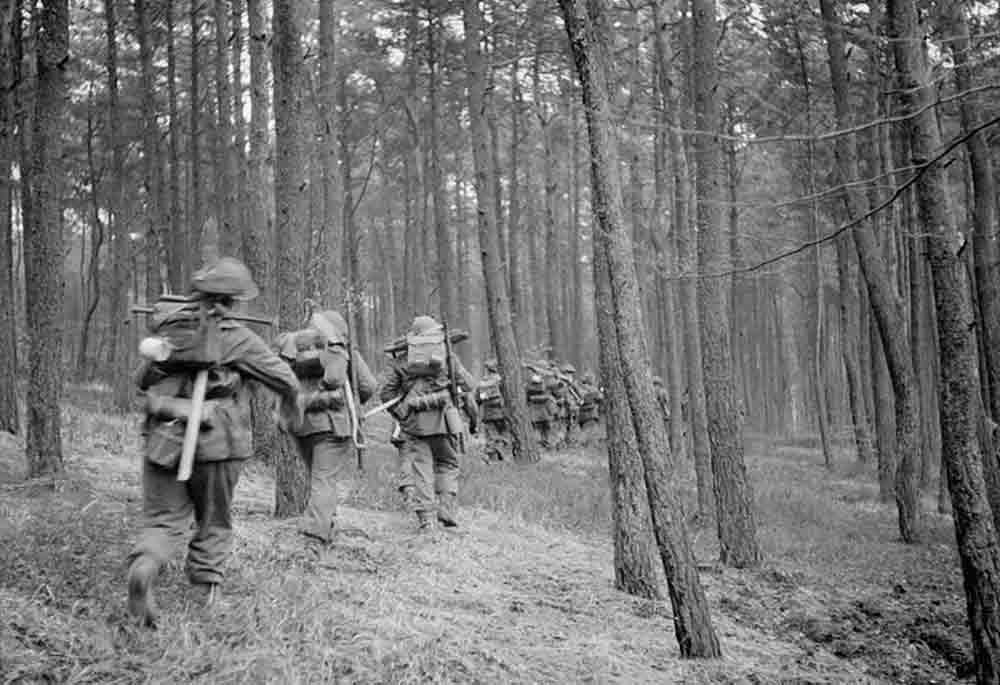
Infantry advance through the Reichswald during Operation Veritable.
Operation Veritable was a three phase operation involving the Anglo-Canadian 21st Army Group. It was the northern element of a pincer movement involving US forces (Operation Grenade) in the southern element crossing the Rhine plain.
The first phase was the clearing of the Reichswald. After an RAF strike on Kleve and Goch and a large scale artillery bombardment, Veritable started on 8 February 1945 with a frontal assault supported by armour. The advance towards Kleve and Goch was rapid, but slowed due to increased German resistance after the first day. Meanwhile, the American advance to the south slowed due to the deliberate flooding of the Rhine plain allowing the German forces to concentrate on the Reichswald.
The advance past Kleve was held up due to the one useable road getting clogged up by Allied armour allowing the German units to strengthen their defences and it was finally cleared on 11 February. Goch was liberated and the bitter and deadly fighting lasted until 22 February. General EIsenhower said the Reichswald was "some of the fiercest fighting of the whole war".
The second phase - Operation Blockbuster - started on 22 February involved the breech of the second German defensive layer with the capture of Weeze and the surrounding forest. This led onto the third and final phase breaking through the defensive line in the Hochwald, securing Xanten and on to the west bank of the Rhine.
Operation Veritable cost the 21st Army Group over 20,000 British and Canadian casualties.
CROSSING THE RHINE
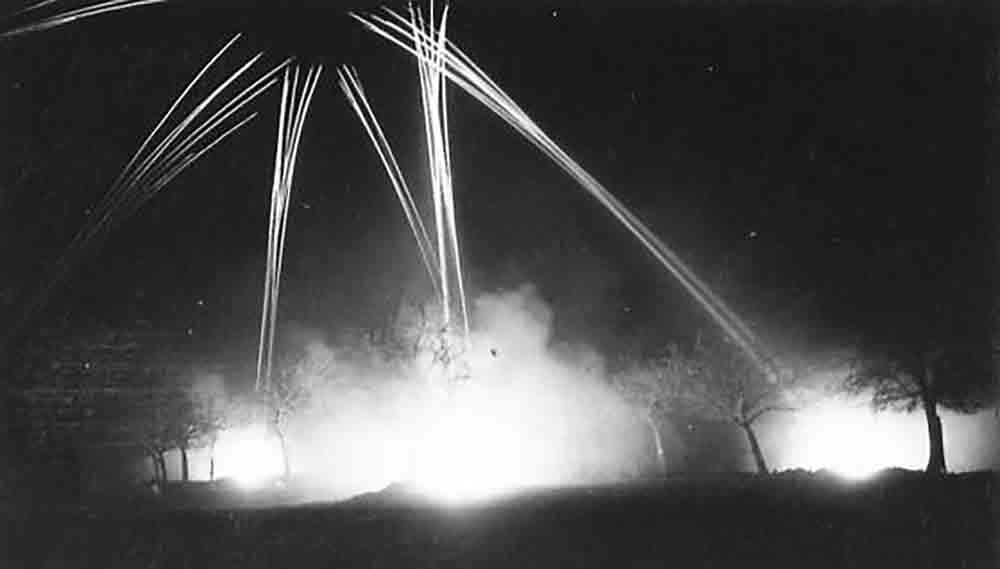
A rocket battery opens fire during the preliminary barrage for the assault of the Rhine.
The Allies now faced the last key obstacle to the invasion of Nazi Germany, the mighty river Rhine, the defensive positions that reinforced its length would make the crossing extremely difficult and dangerous. Meticulous preparation was made for the assault, with 250,000 tons of stockpiled supplies, landing craft, bridging equipment and 5,500 British and American guns providing artillery support for the 21st Army group made up of British, Canadian, American, Polish, Dutch, Belgian and Czech troops who would make the crossing.
The assault began on the night of 23 March with a massive artillery bombardment and airborne bombing to soften up the defences. It consisted of two parts, Operation Plunder, the amphibious assault across the Rhine and Operation Varsity, a massive airborne assault by parachute and glider-borne troops.
OPERATION PLUNDER
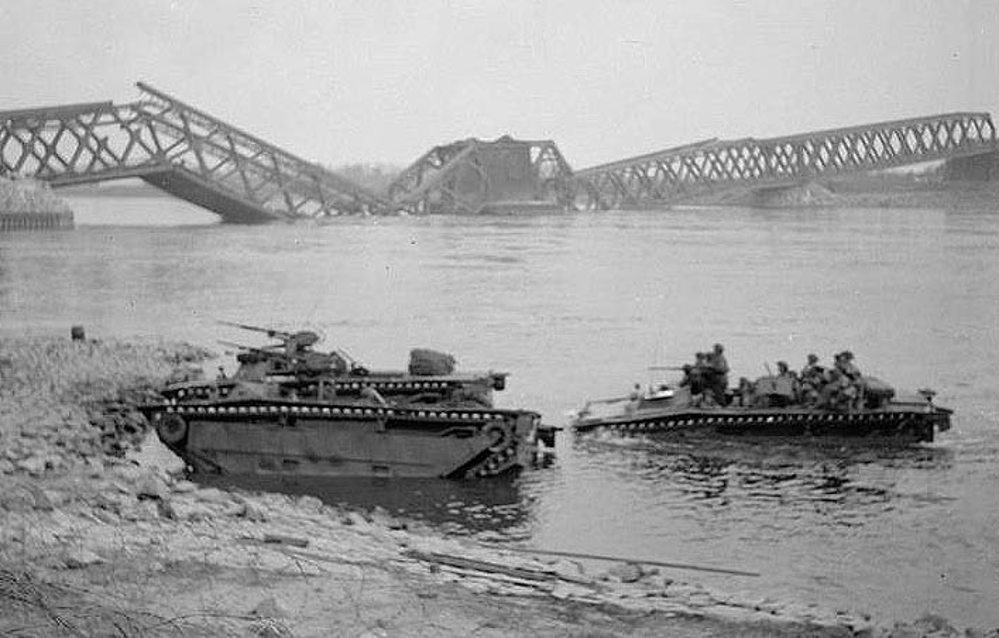
Amphibious Buffaloes of the 1st Battalion Cheshire Regiment landing at Wesel, 24 March 1945.
The spearhead of the crossing were the 51st Highland Division setting off at 9pm on the 23 March in amphibious Buffalo troop carriers. Supported by amphibious tanks and a smokescreen, they reached the opposite bank near Rees which was quickly taken by daybreak.
They were followed by the 15th Infantry Division in the early hours of the 24 March landing between Wesel and Rees with the US 30th Infantry Division landing south of Wesel. A bridge across the Rhine was finished by the evening and by 27 March twelve bridges had been constructed allowing armour to cross the river.
Operation VARSITY
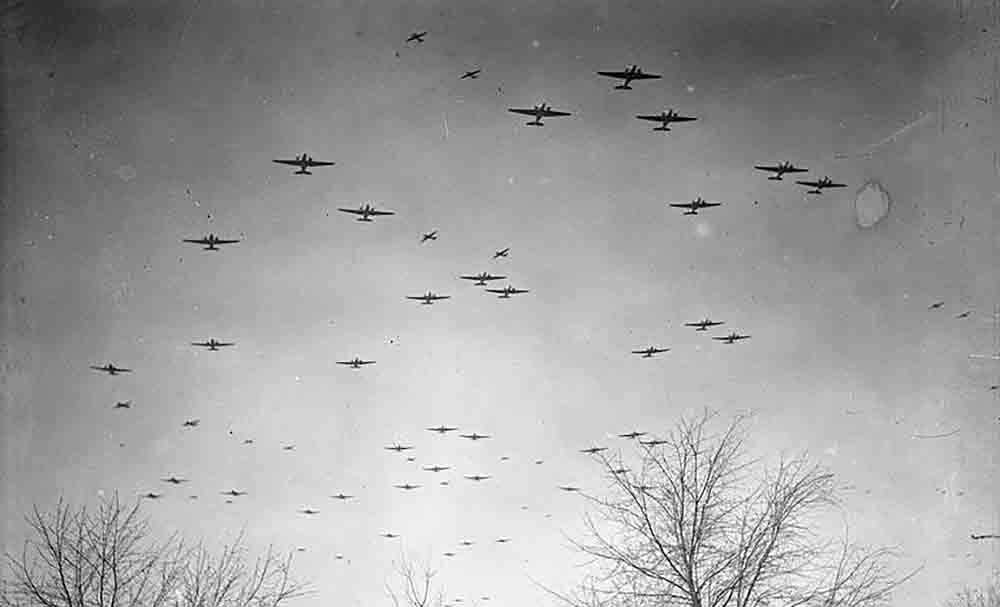
Dakotas of 46 Group on their way to the Rhine dropping zones, Dakotas towing gliders are crossing above them.
At 10am on 24 March 1945, over 16,000 airborne troops landed on the eastern bank of the Rhine near Hamminkeln and Wesel in support of Operation Plunder. Their task was to secure Hamminkeln, bridges over the River Issel, the Diersfordter Wald and local roads until they were relieved by advancing allied forces. All of the objectives were achieved and by nightfall, the 15th Infantry Division had joined up with the 6th AIrborne Division. Operation Varsity was the largest and last large-scale Allied airborne operation of the war.
Operations Plunder and Varsity resulted in the loss of 4,000 Commonwealth soldiers.
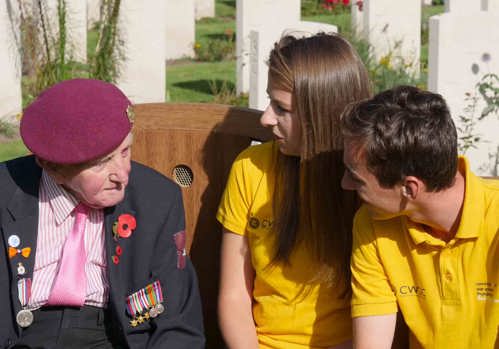
Leave your own Legacy
A gift in your will can help us continue telling those stories for generations to come, so their sacrifice is not forgotten.
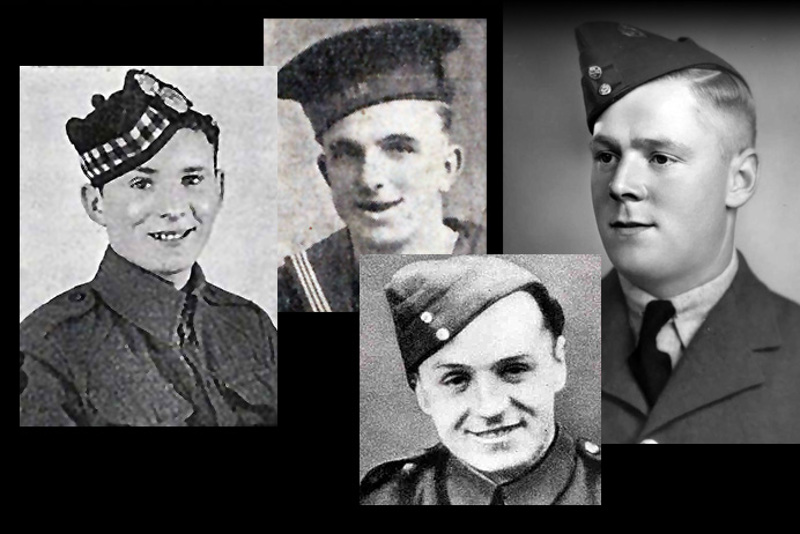
BATTLE OF THE BULGE TO THE RHINE - SHARE THEIR STORIES
Read and share the stories of the people involved in the advance into Germany and crossing the Rhine at For Evermore: Stories of the Fallen, our online commemorative resource.
All images © IWM unless otherwise indicated.

